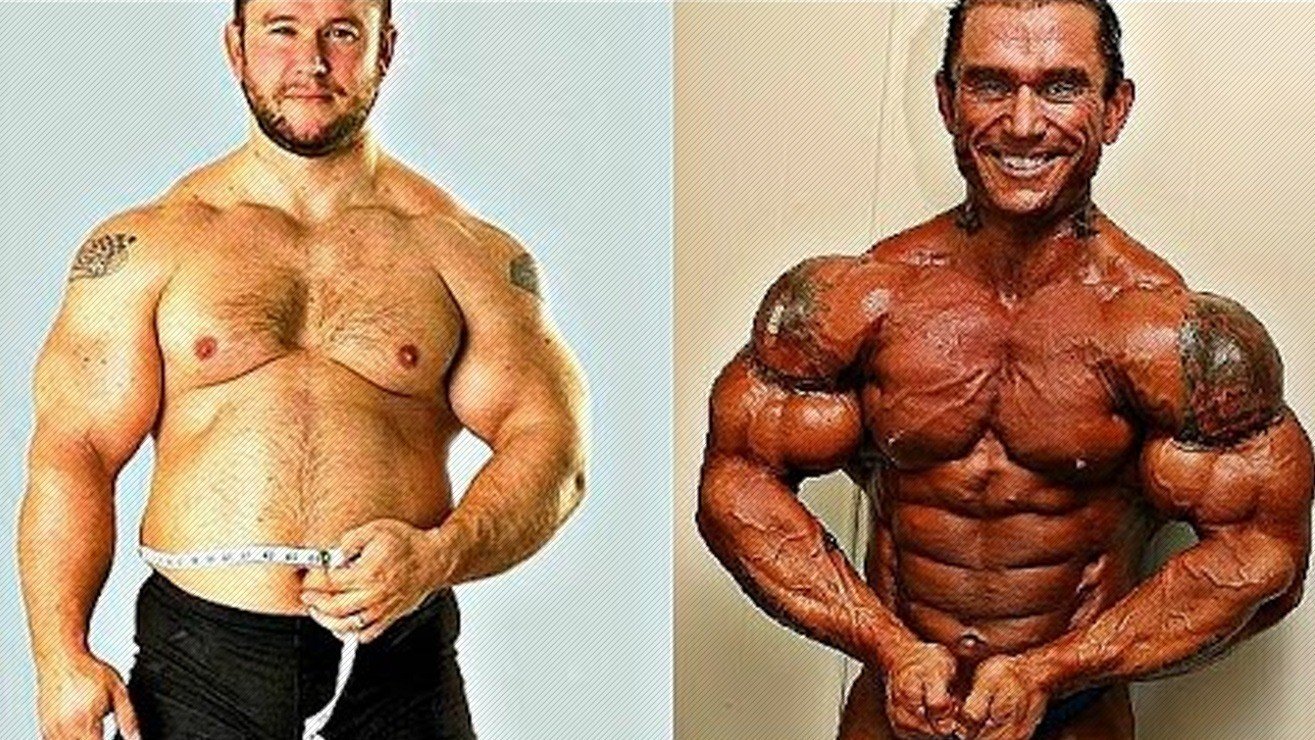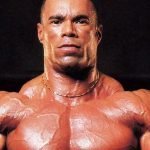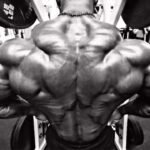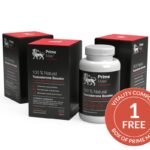Nowadays there are tons of people working hard to put on pounds and pounds of muscle tissue. You see them in the gym all the time. The big guys sitting at 250-275 lbs, throwing around 405 on bench and 500+ on squats. These are the guys that look big year-round but never get down to single-digit body fat levels. Anyone can move heavyweight and look big year-round. However, dieting down to low body fat levels takes a carefully planned approach to lose as much body fat as possible without sparing an ounce of muscle in the process.
Every piece of your diet should be carefully put together so that it puts your body in an optimal muscle preserving, fat-burning state. Dieting is not an easy feat by any means and could end up disastrous if not followed through correctly. It is seen all the time…you start to diet and do good at first, but as a few weeks go by, and with the low calorie/carb levels your muscles look and feel flat and don’t push weights like they used to. So what does the dieter do? He sadistically goes on a food binge to put the muscle (and fat) back on as much as before he started!
How to fix this dilemma? Not much, especially if the dieter is not willing to face some simple facts before he embarks on his diet. Don’t start your diet with a negative attitude. Your body will start to change, look wise for the better, but at the same time, you will seem smaller because your muscles will be flatter at times, and also in the gym with your weights.
You are not going to be able to bang out the same weights as you used to, and you are most definitely not going to increase them. Also, stay true to your diet and adjust accordingly. If you start dropping your size too fast, add some calories. Trying to hit a happy medium… and as far as cheat meals, they are not really necessary but once in a while, they will do your mental state some good. Just don’t start thinking… ”Hmmm, I look flat today… I think I need a cheat meal.” Now, on to the diet.
Protein Levels
Protein is the most widely talked about nutrient in the bodybuilding arena today. It’s all you hear about, X amount times bodyweight, this many grams of whey, etc. But do you really know how to optimally use the different protein sources in order to diet without losing any muscle tissue? When dieting, protein should always be adjusted upwards to preserve muscle tissue. It’s proven science that high protein diets retain more muscle tissue and also help the bodybuilder lose fat at a faster rate than high carbohydrate diets.
A protein level set at 2g X LBM (lean body mass) would not be overkill and in my opinion, your protein should be between 1.5g to 2g X LBM throughout their dieting phase. Also, most part of your protein should be taken around your training sessions (preferably twice a day). It is very important when your highest protein meals are eaten coupled with the protein’s digestion speed.
Research shows that meals eaten immediately after training are most important due to the fact that the body is set up metabolically to shuttle the nutrients into the muscle cells at the fastest rate. Doing this would mean that faster digesting proteins should be utilized at this time, and slower more steadily digesting proteins should be taken in when you don’t need an immediate rush of protein.
Proteins taken in during the day, not around workouts should be slow-digesting proteins such as whole food sources, cottage cheese, or a quality blend. Isolates are not good at these times because fast-digesting proteins do just that, they get digested very quickly and will be cleared out of your system in no time. If you use a slower digesting source it will sit in your stomach and be secreted slowly over a long period of time. This will not put you in a catabolic state and also leave you feeling satisfied after your meals, so you won’t be rummaging through your cabinets an hour later.
The three meals centered before and after your workouts are the most vital and should be taken the most rigidly. Most of the protein sources should be fast-digesting because you want to keep flooding your muscles constantly with protein to replenish your muscle cells as fast as possible after your workout. The protein is taken Pre-Workout should consist of a small amount of whey or egg white. The meal should be eaten 30 min. to 1 hour before training to give your muscles some nutrients and so you won’t be in a catabolic state during your workout.
The two (or more) meals after your workout should consist of a big surge of protein (80g to 100g on the first meal, and somewhat lower for the second) to start acting against the muscle catabolism as soon as possible. The protein source should be a fast-digesting liquid isolate. This could also be coupled with glutamine, creatine, ALA, and taurine for an optimal situation.
The meal following Post-Workout should include some fast-digesting whey and also solid whole-food proteins. The reason for combining the sources of protein is because three hours later your body is still in a positive state to take in proteins but you also should have a small amount to carry over into the next few hours, which is why you should include a lean source of whole food protein such as chicken or cottage cheese during this time. The amount taken should not be as high as the meal immediately after your workout but can still be relatively high (60g-70g) and can always be adjusted according to how your body responds to the diet.
Moving Carbs Inward
During a dieting phase, I feel that carbs should only be taken at the most vital times throughout the day when they are needed most. This is the pre-workout, post-workout, and post-workout II meals. These three meals are the most important and ample amounts of carbs should be eaten, post-workout having the largest amount. The theory is that in the morning your glycogen stores are low, this is when you are in an optimal state for fat burning, which is what we want, right? So why eat a big carb meal in the morning and disrupt the positive metabolic state? Instead, wait until your pre-workout meal to have your first meal that includes carbohydrates. This should consist of a very low glycemic source such as oats or some fruit (apples are good).
Personally, I feel fruit is better as a pre-workout food because it doesn’t cause much insulin secretion. It also lasts longer in your system through the workout, but some people don’t like to eat any fruit while dieting which would make oats a good option. This would be your first carb serving of the day before your workout (30 min to 1 hour) along with a small dose of protein.
By using the simplest nutrients (the…dextrose-Malto-isolate combo) you will replenish your muscle cells as soon as possible. But what happens after the insulin spike, you go back into a catabolic state (unless you eat another small meal quickly after). It is more efficient to take in a low glycemic source post-workout and have a steady release of carbs that will last you until your next feeding. Big deal, you stay in a catabolic state a little bit longer. This is my reason for recommending 30g-40g’s of whey isolate during the last 15 minutes of your workout.
Note
The next most vital meal of the day should be your first post-workout meal. It should contain the biggest portion of carbs for the day. Many people prefer the dextrose and whey shake (which is good if you don’t have a hard time dieting). I personally feel that a meal with liquid whey, and oats or brown rice as your carb source would be a superior option. I know, I know… it’s SET IN STONE that the dextrose-maltose-isolate combo is the best, but spiking insulin in this manner, workout after workout, cannot be the greatest thing as far as making yourself more insensitive to insulin. We know that post-workout your body is in a catabolic state due to the muscle trauma from your workout.
The meal following your post-workout is to further replenish your glycogen stores for the upcoming day. You could break this up into two smaller meals evenly spaced apart or you could stay with one meal towards the end of the “three-hour window.” This meal should contain a moderate amount of protein (whole food is good) and a moderate amount of complex carbs, the meal should look somewhat similar to your first post-workout meal but a smaller amount.
The Rest Of The Day
So now we have established what you will eat around your workout schedule, which should account for around half of your calories and all of your carbohydrates. What should you eat to keep your metabolism in a positive fat-burning state? Fat and protein. That’s right, the meals during the rest of your day should contain moderate amounts of protein, a small amount of fat, and also fibrous vegetables. This is to keep your insulin levels low and to promote a positive fat-burning state.
This supplies your body with moderate amounts of healthy fats and slow-digesting proteins and also fiber to keep your system running smoothly. Your protein sources, like stated above should consist of slow-digesting proteins such as whole foods (chicken, steak, turkey), slow-release protein blends, and cottage cheese. The types of fat that you use in your diet should be at the highest echelons, with the list including Flax (ground, or oil), Fish oil, Hemp seed oil, Olive oil, Walnut (raw or oil), and CLA. Of course, there will be small amounts of trace fats from the meats you eat, and egg yolks are also a healthy way to get fat.
The majority should be Olive and Flax, although the best situation would have 25% coming from CLA (in 4g servings) with the rest coming from Olive and Flax. If four of your daily meals were going to be protein and fat, I would recommend having approximately 40g-50g of Protein with 8-10g of fat. The CLA could be included with your carb meals (Pre and Post) because it is a fairly small amount so they will not impede digestion. But no other fat should be present in your carbohydrate meals. Your meals should either be protein and carbs, or protein and fat.
Conclusion
It’s now established as to what you eat when you eat, and why you eat the foods listed. Many people will be confused as to how to put it all together and will soon realize that the individual person will have to modify it to acquire their personal goals. The diet set-up is quite simple. You are to only eat protein with veggies and a small amount of healthy fat until your workout.
Your Pre-workout meal (30min. to 1hr) will contain your first small serving of carbohydrates, with your last 2-3 meals containing the rest for the day. The total amount of carbs consumed daily (dependant on bodyweight) should be around 150-200 on your training days and should be adjusted downward on your non-workout days because of the decreased energy output. Rotating your carb days is also productive for fat loss. If you feel you are not losing fat at a race that is pleasing to you, you could start to employ more days with low carbs, (50g-75g) coupled with a few high carb days (300g-600g).
Your macronutrient ratios and quantities should be tailored to your individual body type. This article should be used as a guide for the individual reader to make a diet that will be used to achieve their individual goals. Your diet is the most critical component in the quest for fat loss, and if your diet is not designed to fit your body type you will see minimal results.





